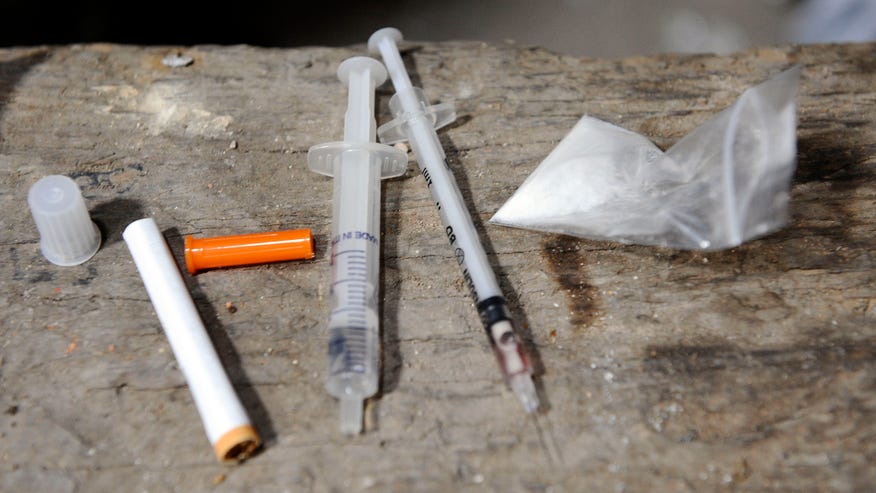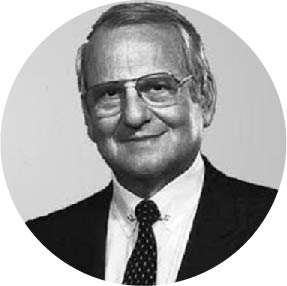
A bag of heroin and drug paraphernalia are seen at an abandoned house.REUTERS/Bor Slana
“Here, want a blue?”
How could one little pill, legally prescribed to millions of people, be a dangerous way to have a good time?
Mike Duggan remembers those words. He said yes to a “blue,” a 30 milligram oxycodone. It sent him down a slippery slope that gave way to a bruising tumble. Less than three years later, he was shooting heroin into his veins on a daily basis.
“The idea of heroin terrifies you, but a blue oxycodone doesn’t scare you,” said Duggan, who founded an addiction recovery service called Wicked Sober.
Duggan told Healthline that his addiction began with a prescription for Percocet after a hockey injury in high school. A popular athlete in Arlington, Massachusetts, a Boston suburb, he liked to drink and have a good time on the weekends.
But the Percocet enticed him with a fierceness he did not at first understand. Soon, he was in college, and it seemed like everyone was popping that blue pill for fun. Before he knew it, he could not get enough oxycodone, the drug of choice for painkiller addicts according to research published in the journal Pain.
Heroin was cheaper and easier to get. The other addicts all “sold it to their friends to keep their own habits going, who sold it to their friends, and so on, and so on,” Duggan told Healthline.
‘Unacceptably High’ Rates of Heroin Use
Heroin use among young adults ages 18 to 25 has skyrocketed in recent years. In 2012, 156,000 people tried heroin for the first time, according to the National Institute on Drug Abuse. The agency has called that statistic “unacceptably high.” It has almost doubled since 2006.
Heroin is no longer a drug used primarily by the poor in inner cities. Now it is a cheap high for young, white suburbanites. Many of them became addicted while raiding their parents’ medicine cabinets in high school and selling the pills at school.
Jody* is the mother of a San Fernando Valley, California man named Alex, who has been sober for almost three months. Jody belongs to a group called BILY, or Because I Love You. The network of parents offer support to one another as their children wrestle with heroin addiction and other problems.
Many parents don’t know their children are abusing heroin. They often start by snorting or smoking it, so there are no needle marks.
“For a long time my head was buried in the sand, and I know it was,” Jody told Healthline. She said high school administrators in the Los Angeles suburbs themselves are in denial about the problem of opiate abuse in their schools. It’s brushed under the rug, she said. Nobody wants to talk about it.
Naloxone Brings Users Back from the Dead
Dr. Leonard Paulozzi, a medical epidemiologist at the U.S. Centers for Disease Control and Prevention, told Healthline that more and younger people are dying of heroin overdoses.
He said most of the CDC’s efforts have been focused on the issue of prescription painkiller addiction. “Heroin is a child of that original epidemic,” he said.
Between 2006 and 2010, heroin-related poisoning deaths increased by 45 percent. Earlier this year, U.S. Attorney General Eric Holder, armed with that statistic, urged law enforcement agencies nationwide to train and equip their forces to use the overdose reversal drug naloxone. During an acute overdose, naloxone rapidly blocks opioid receptors in the brain, throwing the user into instant withdrawal.
Naloxone is usually administered intravenously in emergency rooms, but nasal spray versions of the overdose antidote have also been given to community groups working with addicts nationwide. Paulozzi would like to see such a spray become available to the public and for insurers to cover it. Research published in the medical journal BMJ showed that naloxone spray coupled with overdose education significantly reduced overdose death rates.
An auto-injector version of naloxone called Evzio recently came on the market, but it is expensive, Paulozzi said. There is also a shortage of naloxone in the U.S.
Getting Help and, Maybe, a Way Out
Jody’s son Alex* found help at Inspire Malibu Treatment Center. After several previous failed attempts at getting sober, he has almost reached 90 days without using any drugs or alcohol.
Alex has been helped along by another type of drug, Suboxone, a controversial medication used to treat heroin addicts. Dr. A.R. Mohammad was among the first doctors in California to prescribe the drug, a combination of buprenorphine, a partial opioid antagonist, and naloxone, an opioid antagonist.
Between 2002 and 2011, the number of doctors prescribing buprenorphine in Utah increased 67-fold, to 1,088. The number of patients filling those prescriptions increased 444-fold, from 22 in 2002 to 9,763 in 2011, according to the CDC.
The medication treats addiction by acting on the same pleasure receptors in the brain that are stimulated by oxycodone or heroin. However, the medications are safer and generally do not induce the type of behaviors that disrupt a person’s life and render them unable to work.
Buprenorphine, brand name Subutex, can fulfill cravings that occur when a patient stops abusing illegal drugs. But it has the potential to be abused itself. Patients chop it up, snort it, and inject it. It now comes in a film that can be placed under the tongue, however, reducing the potential for abuse, Mohammad said.
If Suboxone is injected, it will cause uncomfortable withdrawal symptoms that do not occur when it is taken in oral form.
The new oral drugs are preferable to older treatments, such as methadone, Mohammad said, which is less effective and has a high potential for abuse. Another preferred treatment option is Vivitrol, an injectable form of naltrexone, another opioid antagonist.
Suboxone: A Better Drug to Depend On?
Critics of Suboxone contend that a person who takes it is not really sober. But Mohammad, his patients, and their loved ones say it saves lives.
Depending on the duration of opioid abuse, brain damage can be permanent. Mohammad makes no secret of the fact that he has patients who have been on Suboxone for 11 years, but he says there is no other way for them to stay clean.
“There is a deep misconception in society about using drugs,” Mohammad told Healthline. “Addiction is a chronic mental illness. It is a deadly disease and you can die from it.”
Patients do become dependent on Suboxone, he said. “But the difference between heroin and Suboxone is that on heroin, your life is completely screwed,” he said. “With Suboxone, you can have quality of life. What counts is good quality of life.”
Mohammad said patients return to work, become involved with their families again, and no longer meet the criteria for addiction as defined by the Diagnostic and Statistical Manual of Mental Disorders.
It is physically impossible for an addict to get high on Suboxone because of its chemical formulation, Mohammad said. And studies like this one that appeared in the Journal of Substance Abuse Treatment in 2010 show that people rarely abuse it.
Paulozzi called Suboxone “an intervention that’s proven to work. The hard part is making it available to everybody and convincing people to get into a program,” he said. “Most people who have a problem don’t think they need to get help.”
Efforts are under way at the federal and state levels to improve access to Suboxone. Doctor prescribing regulations and insurance coverage of the drug differ state by state.
Suboxone has plenty of opponents, mostly advocates of Alcoholics Anonymous-style 12-step abstinence programs, Mohammad said.
Duggan said Suboxone did not work for him, although he admits that it helps some people. He said Wicked Sober does not turn away those who are on it.
A lasting solution to addiction is “developing fellowship and getting out of one’s self,” Duggan said. “The best way is by helping other people.”
He said Suboxone has definite street value, and some sell it to get the drug of their choice.
Heightened Risk of HIV and Hepatitis C
Overdose isn’t the only danger young heroin addicts face. The issue of young, suburban white adults injecting heroin has been thrust into the spotlight because many of them are now contracting hepatitis C.
Massive outbreaks have occurred in suburban Boston, Wisconsin, Florida, Pennsylvania, and New York. A report produced last year by the Office of HIV/AIDS and Infectious Disease Policy confirmed “Rising rates of hepatitis C infection among young injectors, both male and female, primarily white, found in suburban and rural settings, who started opioid use before transitioning to heroin injection.”
More than half of the 17,000 new hepatitis C infections in the U.S. in 2010 were injection drug users, according to the National Institute of Drug Abuse.
But the risk of contracting an STI occurs apart from injection use, too. Research published last month in the Journal of Substance Abuse and Treatment showed that young adults (more likely to be white and middle class) were putting themselves at risk for HIV as well via unprotected sex with casual partners, often in exchange for drugs.
Alex said he indeed lowered his standards sexually while taking heroin. “It was pretty bad,” he said. “My standard in women went right out the window.”
As for sharing needles, he said he only did it once, during a failed attempt in rehab. “It was a last resort type of deal,” he said.
Getting Treatment Where It’s Needed — Fast
Addicts cannot get clean without significant help.
“To expect someone with a brain illness to manage their own life and do it on their own is an unrealistic expectation,” Duggan said.
Duggan’s work at Wicked Sober involves hooking addicts or their loved ones up with resources as quickly as possible. He does not operate a treatment center. Instead, he networks with a vast directory of resources to fast-track a person into treatment.
“The hard part is making [medications] available to everybody and convincing people to get into a program.”Most people who have a problem don’t think they need to get help.” — Dr. Leonard Paulozzi
You’ve got to strike while the iron is hot, he said, and you’ve got to make sure there is an iron-clad support system when the person is released.
Another problem arises when a parent or friend tries to get help for an addict and reaches out. Usually, a treatment professional says they have to speak directly with the patient if they are an adult.
“If someone says, ‘I do need help and I’m ready right now,’ to a loved one, it can take a day or two to find help,” Duggan said.
He recalled calling several times for help when he was an addict, but being told there was a waiting list or to call the next day. “My solution was to get high,” he said.
*Last names withheld to protect source privacy


